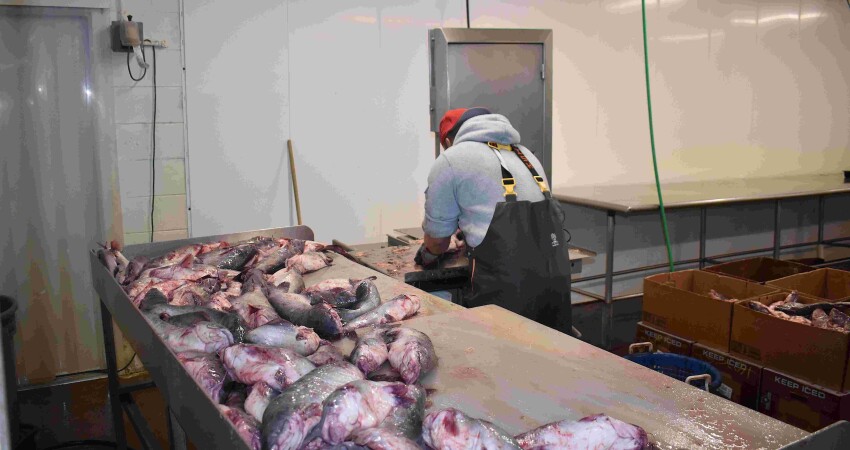The state of Maryland has been awarded $4.5 million in federal funds to bring the state’s blue catfish population under control. U.S. state senator Chris Van Hollen announced the funding on March 15 during a tour of Tilghman Island Seafood in Talbot County, Maryland, the only USDA-certified blue catfish processor on Maryland’s Eastern Shore.
“Blue catfish pose a growing environmental and economic threat to our treasured Chesapeake Bay as they grow in number and prey on our iconic blue crabs and rockfish,” says Senator Van Hollen in a written statement.
Three million of the grant will expand processing facilities, $1 million will pay USDA inspectors at the processing plants, and $500,000 will fund catfish research through the Department of Natural Resources (DNR).
The research will be directed towards monitoring the catfish population to determine its full impact on the Chesapeake Bay by tracking the fish where it travels, where it spawns, and its diet habits, developing early warning systems to help remove the fish quickly from new tributaries, and testing removal methods.
It has been a bit of an uphill battle for funding. Last year, Maryland Governor West Moore was turned down for federal funds when he filed a petition with the National Oceanic and Atmospheric Administration’s (NOAA) Fisheries Service asking the agency to declare a federal disaster because of the “explosion” of blue catfish, flathead catfish, and northern snakeheads in Maryland waters.
The Virginia legislature slashed a $4 million similar catfish grant proposal in 2023 down to just $250,000. These funds were awarded in February 2024 to Sea Farms Inc. of Gloucester County, Va., to purchase a blast freezing system and expand its storage freezer capacity.
The Virginia Department of Wildlife Resources introduced blue catfish to Virginia’s James, Rappahannock, and York River basins as a new recreational fish during the 1970s and 1980s. Blue cats are native to the Mississippi, Ohio, and Missouri rivers.
“Invasive blue catfish have spread rapidly throughout Maryland in recent years, and multiple studies have shown these predators are eating significant amounts of blue crabs, white perch, and other commercially and culturally important species,” says Maryland Department of Natural Resources Secretary Josh Kurtz.
“We’re encouraging commercial fishermen and other anglers to harvest blue catfish to reduce the ecological harm caused by the fish, says Kurtz. “This federal funding will help reduce blue catfish processing bottlenecks and, in turn, bring more wild-caught blue catfish to grocery stores, restaurants, and dinner tables.”







